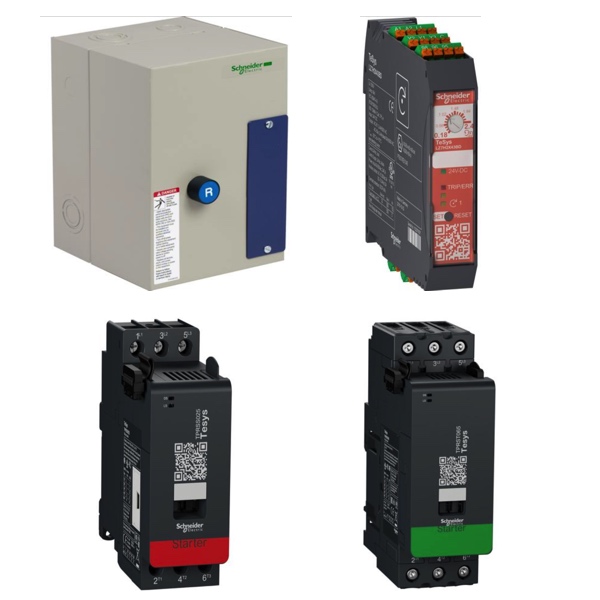IEC Non-Reversing Starters

Non-reversing starters are motor control devices specifically designed for applications where the motor's direction of rotation does not need to be reversed. They provide essential control and protection features to ensure safe and reliable operation of the motor.
Non-reversing starters incorporate an overload relay, which is responsible for monitoring the motor's current. If the current exceeds a predetermined threshold, the overload relay trips and interrupts the power supply to the motor, protecting it from overheating and damage. They may have auxiliary contacts that provide additional control functionality. These contacts can be used to monitor the status of the starter, provide signals for remote indication or control, or interface with other devices in the system.
IEC non-reversing starters adhere to the international standards set by the International Electrotechnical Commission (IEC). These standards ensure compatibility, interoperability, and safety compliance with other IEC electrical devices and components.
More Information about Non-Reversing Starters
Soft Starters: Some non-reversing starters are referred to as "soft starters." Soft starters are designed to gradually ramp up the motor's voltage and torque during startup, reducing mechanical stress and electrical current spikes. This feature helps to minimize wear and tear on the motor and the connected equipment.
Compact Design: Non-reversing starters often have a compact design, which saves space and facilitates installation in applications where space is limited.
NEMA Sizes: Non-reversing starters are available in different NEMA sizes, such as Size 0, Size 1, Size 2, and so on. The appropriate size is selected based on the motor's power rating and the physical dimensions required to accommodate the components.
Motor Control: Non-reversing starters provide basic motor control functions such as starting, stopping, and protecting the motor against overload conditions. They ensure that the motor operates within safe parameters and can be controlled effectively.
Voltage and Phase: Non-reversing starters are designed to handle specific voltage and phase configurations. They can be used with single-phase or three-phase motors, depending on the application requirements.
NEMA Compliance: Non-reversing starters are designed and manufactured in accordance with NEMA standards to ensure compatibility and adherence to industry norms.
Application Flexibility: Non-reversing starters find applications in various industries and equipment, such as pumps, compressors, fans, conveyors, and more. They provide reliable motor control for a wide range of applications.
Accessories: Additional accessories may be available for non-reversing starters, such as pushbuttons, pilot lights, and selector switches. These accessories enhance the functionality and control options of the starter.
When selecting a non-reversing starter, factors such as the motor's power rating, voltage and phase requirements, and the specific needs of the application should be considered. Proper installation, wiring, and compliance with relevant electrical codes and standards are essential to ensure the safe and efficient operation of the motor control system.
Motor Control Basics
Motor control allows operational control of electrical motors in various environments.
Motor control circuits provide a safe way to operate electrical motors. Back when motor control circuits were in their infancy, it would have been common to see a simple disconnect switch that would be used to turn on and off a motor. Depending on the size of the motor and how much voltage was required, operating this disconnect would have been dangerous, with a very high possibility of arcing or electrocution. Not to mention that when the disconnect was actuated, the large amount of inrush current would have damaged the motor over time.
In today's motor control circuits, there are a few common pieces of hardware.
A circuit breaker is used to protect the motor and any hardware downstream. A contactor and an overload relay are connected together and function in tandem to allow for remote and safe operation of the motor. The contactor functions much like a relay, allowing for a smaller electrical circuit to remotely close the motor contacts, starting the motor. The overload relay is designed to protect the motor in the case of a prolonged overcurrent event. These two devices are wired in series, so that if the overload relay detects an overcurrent event, the contactor will open the motor contacts, shutting off power to the motor.
The other two most common types of motor control hardware are a soft starter and a Variable Frequency Drive (VFD).
Both of these devices function in a similar way to the motor circuit with some added functions. The soft starter is designed to reduce large inrush current to the motor upon startup. This “soft starting” of the motor will prolong its life and allow for safer operation. The VFD performs the soft start functions, but also allows for speed control of the motor. This speed control is critical in many different environments and has made VFDs one of the most common and safe to use motor control circuits today.

